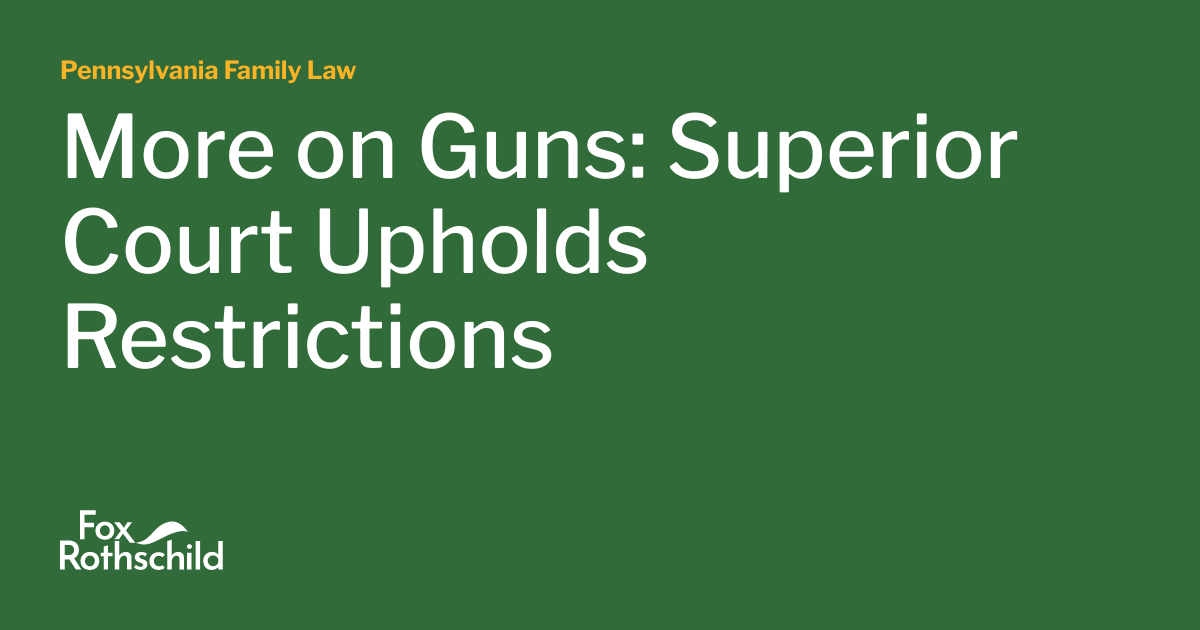We promised not to turn this into a gun blog but in a country where half of all families own guns and the half that do own a lot of them, the impact of the U.S. Supreme Court’s ruling in New York State Rifle & Pistol Association v. Bruen (597 U.S. 1) is going to be kicking around for the next few years for reasons that become apparent from the Superior Court’s precedential ruling in Com. v. McIntyre on March 25.
This all begins in 2000 when Jonathan McIntyre was convicted of burglary, robbery and aggravated assault. After being paroled in 2018 he went to live with an uncle in Chester County. While in that house in 2020, he came across a firearm. Under Pennsylvania’s Crimes Code, persons convicted of any of 38 separate offenses are forbidden to possess firearms. Knowing that this could be an offense under 18 Pa.C.S. 6105, Mr. McIntyre chose not to remonstrate with his uncle about the issue, but instead removed the gun and buried it in the ground. When the uncle and another relative in the house later reported the gun missing, Mr. McIntyre took him to the park where he buried it, about 20 minutes away.
The opinion of the Superior Court goes into some detail but suffice to say that people living with Mr. McIntyre had concerns about his mental stability and were especially concerned because of the presence of a firearm. Mr. McIntyre seems to have appreciated that fact which prompted him first to take the gun to the local fire department (at least he says he tried) and when he found no one there, he proceeded to bury the gun. Needless to say, it was clear he did have possession of the gun when he buried it. That possession is a second degree felony.
The defense here tried to invoke the recent Bruen case suggesting that restrictions on gun ownership must have ties to the time when the 2nd Amendment was adopted in 1791. We won’t enumerate all 38 offenses which forbid use of a firearm but McIntyre’s convictions for burglary, robbery and agg assault are among the 38. So, this was not the best test case. But this is probably not the last we will here about Section 6105 because there are some offenses that seem to have little resemblance to what we will term gun “protection.” Among those offenses are stalking; unlawful restraint; luring a child; 1st or 2nd degree felony trespass; corruption of minors and second offenses involving receiving stolen goods or theft by unlawful taking. Reasonable minds could disagree over whether these crimes should deprive Pennsylvanians of what many argue is a fundamental right. Then there is the issue of how long this restriction should subsist. If, while a freshman in college your ill directed attention to a classmate culminated in a conviction for stalking, should that mean you can never possess a firearm? Almost all of us can agree that “violent” offenders probably should not be in possession of firearms. But there are going to be a fights over non-violent convicts and the duration of restrictions on them. We discussed that in our blog about the 3rd Circuit decision in Range v. Attorney General, where citizens convicted of food stamp fraud or any other crime with a one year punishment are prevented by federal law from possessing guns. Third Circuit Steps into “Range” with A New 2nd Amendment Case. | Pennsylvania Family Law (foxrothschild.com)
For now, Section 6105 lives but gun “battles” of differing kinds will continue both in our streets and in our courtrooms (where firearms remain forbidden, thankfully). What is curious about all of this is that Com. v. McIntyre is a published decision. Yet, the Superior Court specifically finds that the appellant failed to raise the constitutional issue at trial, did not secure the correct record for the appeal and did not preserve the issues in his concise statement of the appeal under Pa.R.A.P. 1925(b). The waiver issues are epidemic, yet we have at 41 page precedential decision.
Com. v. McIntyre, 2024 Pa. Super. 58.

